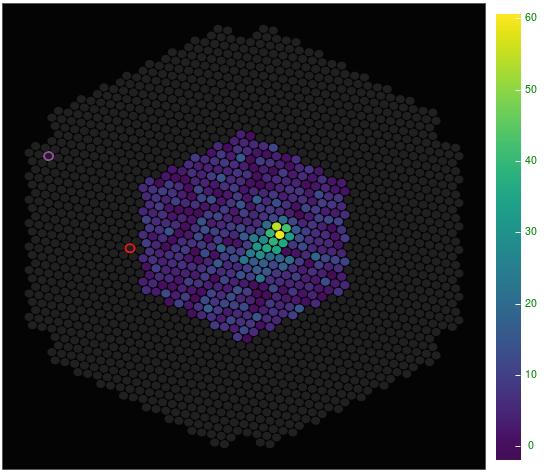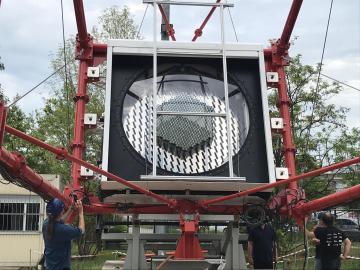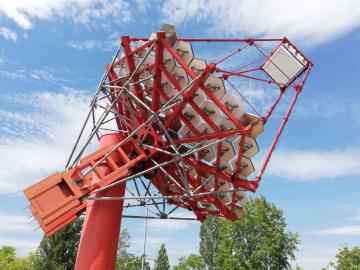First observations of atmospheric showers with NectarCAM
On the night of 22-23 May 2019, a prototype of the NectarCAM camera, installed in the focal plane of a medium-size telescope prototype of the Cherenkov Telescope Array (CTA) in Berlin/Adlershof (Germany), observed its first atmospheric shower (see Figure 1).

These showers, which are produced by the interaction of high-energy particles (gamma photons and cosmic rays) with the atmosphere, emit a brief Cherenkov radiation that is collected by the telescope’s mirrors and detected in its focal plane by photomultipliers. This camera prototype (see figures 2 and 3) is equipped with 61 detection modules (427 photomultipliers) developed, tested and manufactured under the responsibility of IRAP. These focal plane modules were produced by Microtec with funding from CNRS-INSU, CEA-IRFU and Labex OCEVU.


The NectarCAM is one of the cameras proposed to equip the medium-size telescopes of the future CTA observatory. It will then consist of 265 modules (1855 photomultipliers). In France, this project is being carried out as part of a collaboration between the CEA (IRFU) and the CNRS (IN2P3 and INSU) with the support of Labex P2IO, OSUG2020 and OCEVU.
The NectarCAM/CTA team at IRAP is made up with Christian Jarnot, Pierre Jean, Jürgen Knödlseder, Romain Mathon, Christophe Marty, Jean-François Olive, Pascale Ramon, Thierry Ravel, Adellain Tsiahina and Vincent Waegebaert.
Further resources
- Website dedicated to the CTA Observatory : https://www.cta-observatory.org
IRAP Contact
- Pierre Jean, pierre.jean@irap.omp.eu






